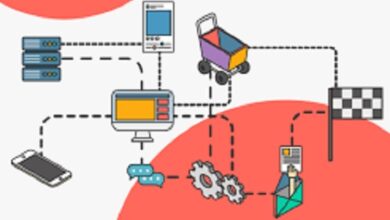Areas of human resources
Today, human capital management extends to various aspects of a company. We should not only worry about hiring staff, but also about their integration and performance within the organization. However, a worker’s performance can be affected by a large number of variables. In this article we will provide you the information about Areas of human resources.
Therefore, it is essential to know the most important Human Resources areas of a company. Knowing what they are and how they work will be essential to guarantee the well-being of a team.
1-Staff planning and organization
There are several factors that affect the organization of shifts and staff schedules. Among them are those dictated by current legislation, such as rest days , breaks between shifts, and medical or personal leave. But there are also others of a personal nature, such as time availability, which will vary according to each employee. Therefore, schedule management can be more or less complicated , depending on the type of company.
The optimization of this area of Human Resources being aware of the types of contracts that are made in the company, salaries or seniority . It is worth remembering that companies must have time control over workers, whether they have full-time or part-time contracts.
Shift organization and talent management
Knowing your team thoroughly is a must in talent management, and it is not a free obligation. That is why leaders focused on managing talent are emphasizing more in some areas of Human Resources. In this way, we are seeing a tendency to delegate the responsibility of time management to the employees themselves.
Thus, this process goes from several hours of management to just a few hours of supervision. However, there are dynamics such as flexible hours that are standing out when it comes to promoting talent. This transfer of responsibility helps employees work on their organizational skills, since they control the working hours themselves, with delivery dates already set by their superiors.
2-Recruitment processes
Selection processes are another of the important areas of Human Resources, since the success of a project depends largely on the quality of its personnel. The leaders in talent management are in charge of recruiting the company’s workers, and therefore it will depend on them whether or not the objectives are achieved.
However, recruitment processes are changing. Alternatives such as gamification allow us to discover skills that we would not have discovered otherwise. For example, who plays the role of leader, who works better as a team, and more.
Errors in the selection processes
Lack of information is the worst enemy in decision making. For this reason, a good organization of the candidates allows to have a global vision of all the applicants, as well as their skills and knowledge. However, these tasks require hours and hours of manual work and review to filter candidates, followed by networking that may or may not be fruitful.
Due to this, technology has been gaining weight in this and other areas of Human Resources. Today there are different web pages and software services that are responsible for automating these processes , leaving the best prepared candidates on the recruiters ‘ table .
3-Performance evaluation
The job of professionals in talent management is not just about hiring. The Human Resources department must also ensure that the new employee successfully integrates with the team. This particular process will decisively affect its performance.
In this way, surveys to measure job performance become very important tools. Maintaining a good control of the productivity of our workers will allow us to detect possible problems or enhance possible opportunities that we have missed . Therefore, improving job performance should be paramount for any professional in the sector.
What happens if I don’t monitor my employees’ performance?
Performance appraisal has become an indispensable tool in talent management. Without it, it will not be possible to calculate if the objectives are being worked on correctly, or if perhaps the allocated resources are insufficient.
On the other hand, we can also find good results. If this happens, we must reward the team’s effort, as well as encourage it to continue like this.
4-Compensation and benefits
The organization of compensation is one of the areas of Human Resources that seeks to motivate staff, so that their productivity is the maximum possible. If, for example, we have carried out a performance evaluation, we will discover that perhaps tools are needed to reward team productivity.
This investment can be a non-competition agreement, bonuses for knowledge or seniority, as well as for daily commutes to the workplace. However, the benefits also consist of work dynamics or methods that facilitate the day-to-day activities of workers. For example, flexible hours or telecommuting .
Mismanagement of compensation
Remuneration is directly linked to worker satisfaction and is one of the Human Resources areas that can most negatively affect the productivity of our team. Therefore, this balance must be found between the compensation established by current law or collective agreements, and that part that the company can offer as a competitive value.
In the same way that we monitor the performance of workers, we must reward good results and invite them to continue their attitude. The lack of a compensation plan can lead to episodes of absenteeism or even harm the work environment of your company.
5-Safety and work environment
Employee compensation is not the only way to compensate for effort. Nowadays, professional profiles are looking for work options in a suitable work environment, where they feel part of a team and with the potential to grow professionally. This must be guaranteed from the Human Resources management, and therefore we must guarantee an optimal work environment.
This means that the company has the necessary tools so that workers can carry out their work activity at ease. For example, if we offer open company communication we can invite them to report any issues they see. We thus encourage their participation and enhance their interest in the operation of the project.
Errors in the work environment
We can find several malpractices in the care of the work environment. For example, poor planning when communicating tasks and responsibilities. However, there are also tangible elements such as the lack of tools to work with or their poor quality.
The well-being of the workers is taken care of through the space where they carry out their work activity. But with telecommuting, this task has become more complicated. In any case, there are digital dynamics of team building or even digital onboarding so that the distance does not negatively affect the experience of your team.
6-Staff education and training
Another of the most important Human Resources areas. Through the training and qualification of personnel we work on their business commitment. Thus, employees will be able to see within the company the possibility of growing and advancing professionally.
There are endless techniques and dynamics so that job training is not boring and encourages the employee to participate. In addition, these can be applied in face-to-face, hybrid or completely digital forms of work. Like the other areas of Human Resources, this can negatively affect the performance of our team and company.
poor training management
Lack of interest in a project is enough for productivity to drop. In addition, in an increasingly competitive work environment, it will not be difficult to find companies with offers that are much better valued by those interested. One of the keys in talent management is to ensure that the routine does not become tedious.
This need can be resolved through gamification dynamics , for example. These form our team, just as they work their minds and enhance their creativity.
The management of Human Resources does not only consist of working on some specific aspects. The vision when managing talent must be global, since the concerns and needs of professionals will change as the sector evolves. Less than a decade ago teleworking was not implemented in a solid way in Spain, today it seems impossible to imagine a future without it.
Therefore, if we seek to optimize our team, constant training in the field of Human Resources will be an essential element within our strategy. Now that you know the main areas, you can focus and find all the elements of your project that you are not taking full advantage of.




